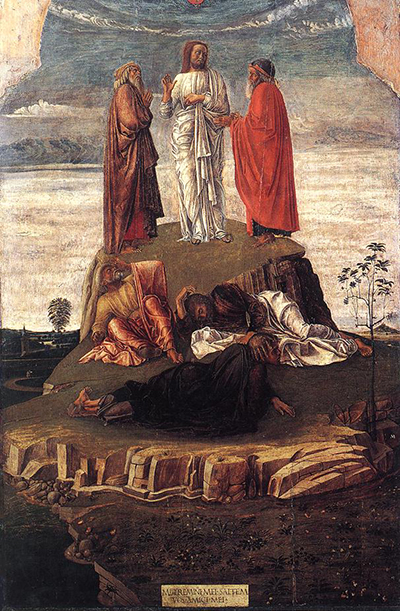Transfiguration of Christ is an oil on panel painting that was done by Giovanni Bellini, an Italian Renaissance master in 1480. Giovanni produced 2 versions of the painting. The first version he painted it in 1455 and the second version was done in 1480.
For the second version, the event is not as supernatural as the first one, and Mt. Tabor is not as high. It is also late in the afternoon, and Christ stands in the centre of the landscape with his hands against white clouds. On the left side of the painting, a farmer is leading a goat and an ox past a monastery in the evening shadows. The figures of Elijah and Moses have the semblance of the old testament. Three apostles are on the ground, a fence crosses the foreground, and a rocky chasm is open, creating a separation between the holy event and the observer.
The transfiguration of Christ painting is made out of wood base and oil. This is a religious and spiritual painting which is one of Bellini's most famous work. He was known for religious works of art because it was one of his styles. In this painting, there is a division between the scene and the viewers. The division is created by a path that cuts across to make the viewer seen distance enough from the scene that seems to be at a distance. This is one thing that brings about the uniqueness of the scene in the Transfiguration painting.
Bellini also drew Elijah and Moses with fluid lines to show the flowing white hair, the long white beards, and the light red clocks that both figures are dressed in. He also adds a geometrical symmetry to depict the wise men. Geometry is also used to the two trees that are close to the prophets. The Transfiguration painting is one of the greatest paintings of the 15th century, Giovanni Bellini created dignity, space, strong symmetry and symbolic meaning in this painting which now resides in the Capodimonte Gallery of Naples, Italy.




